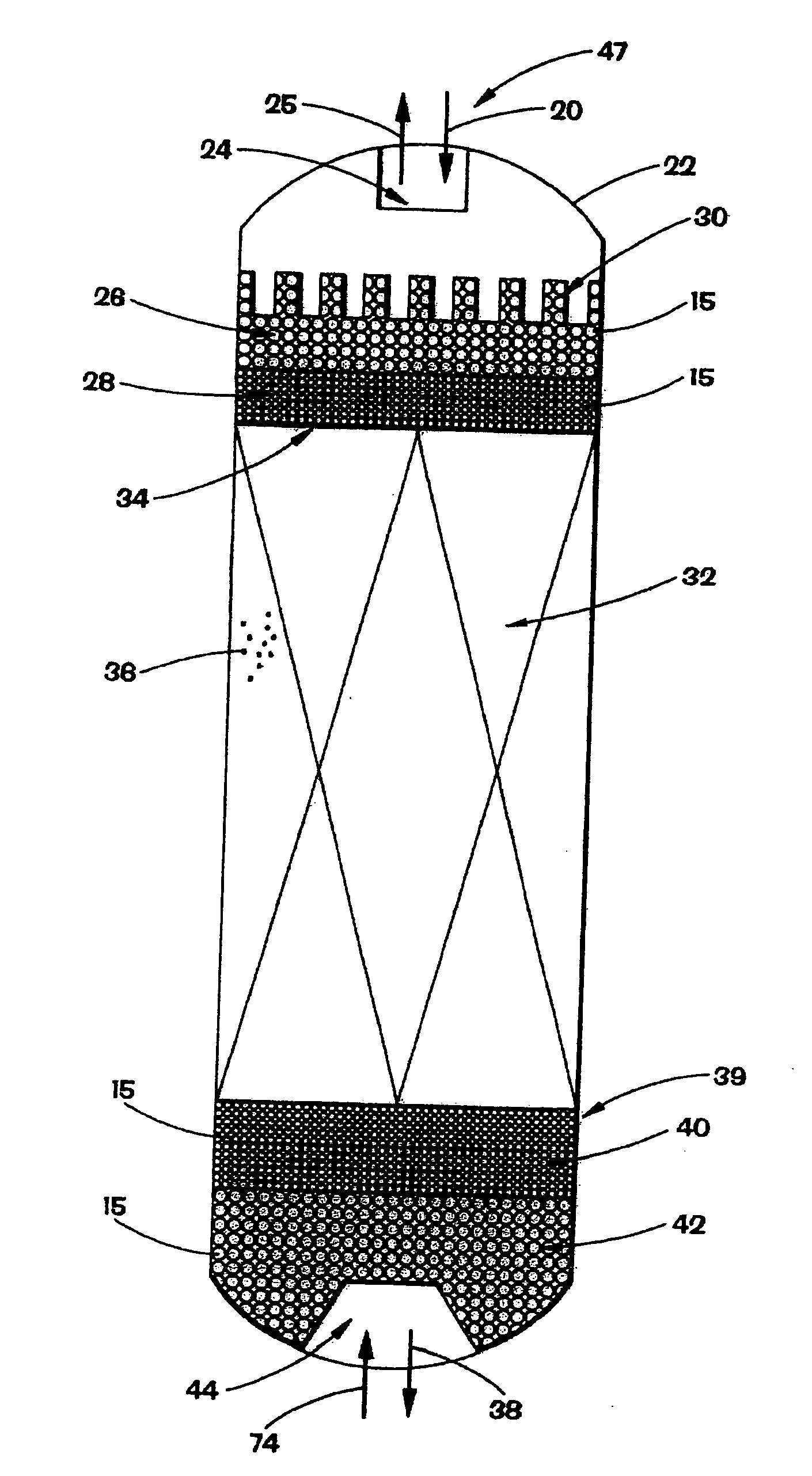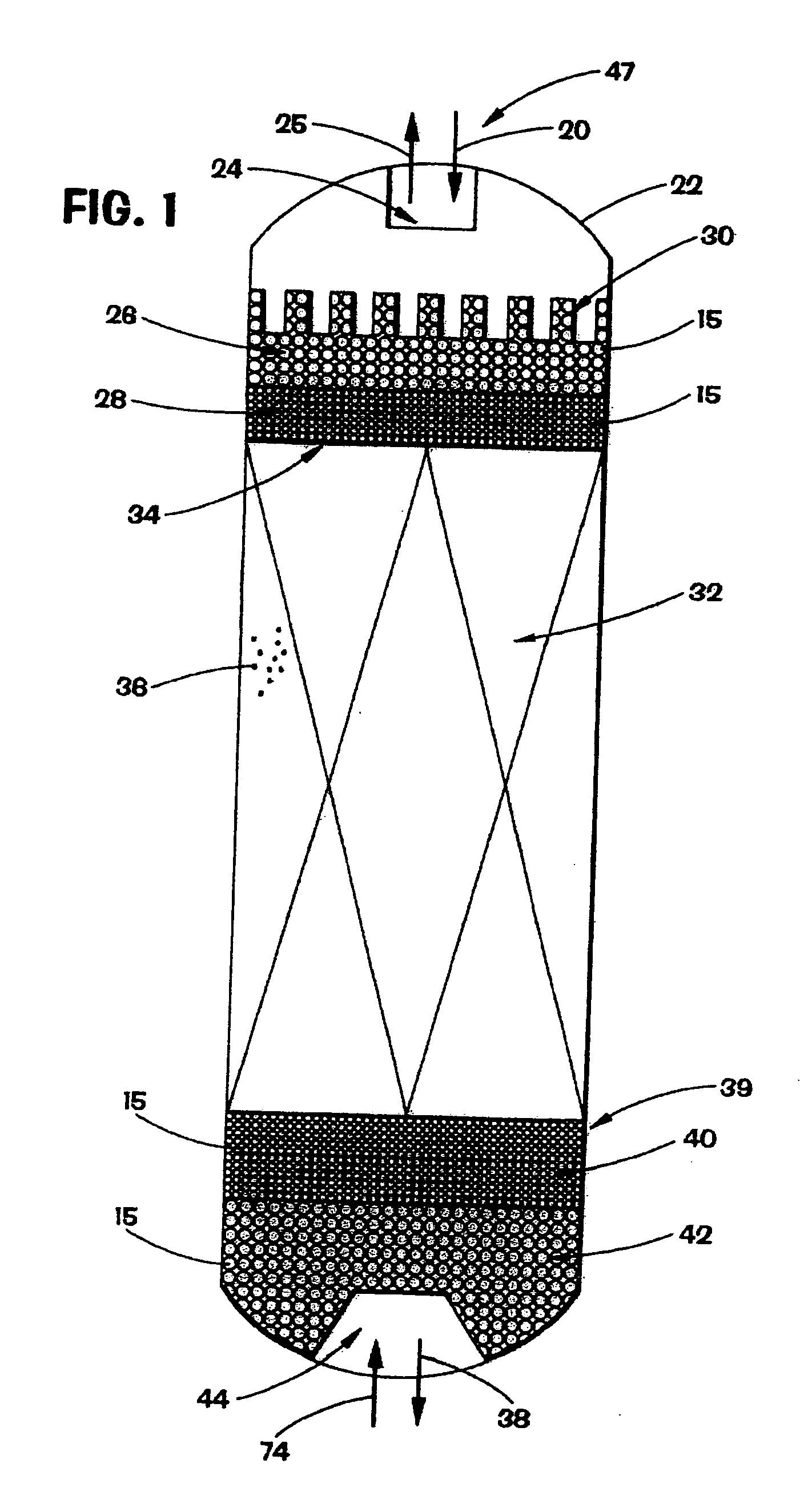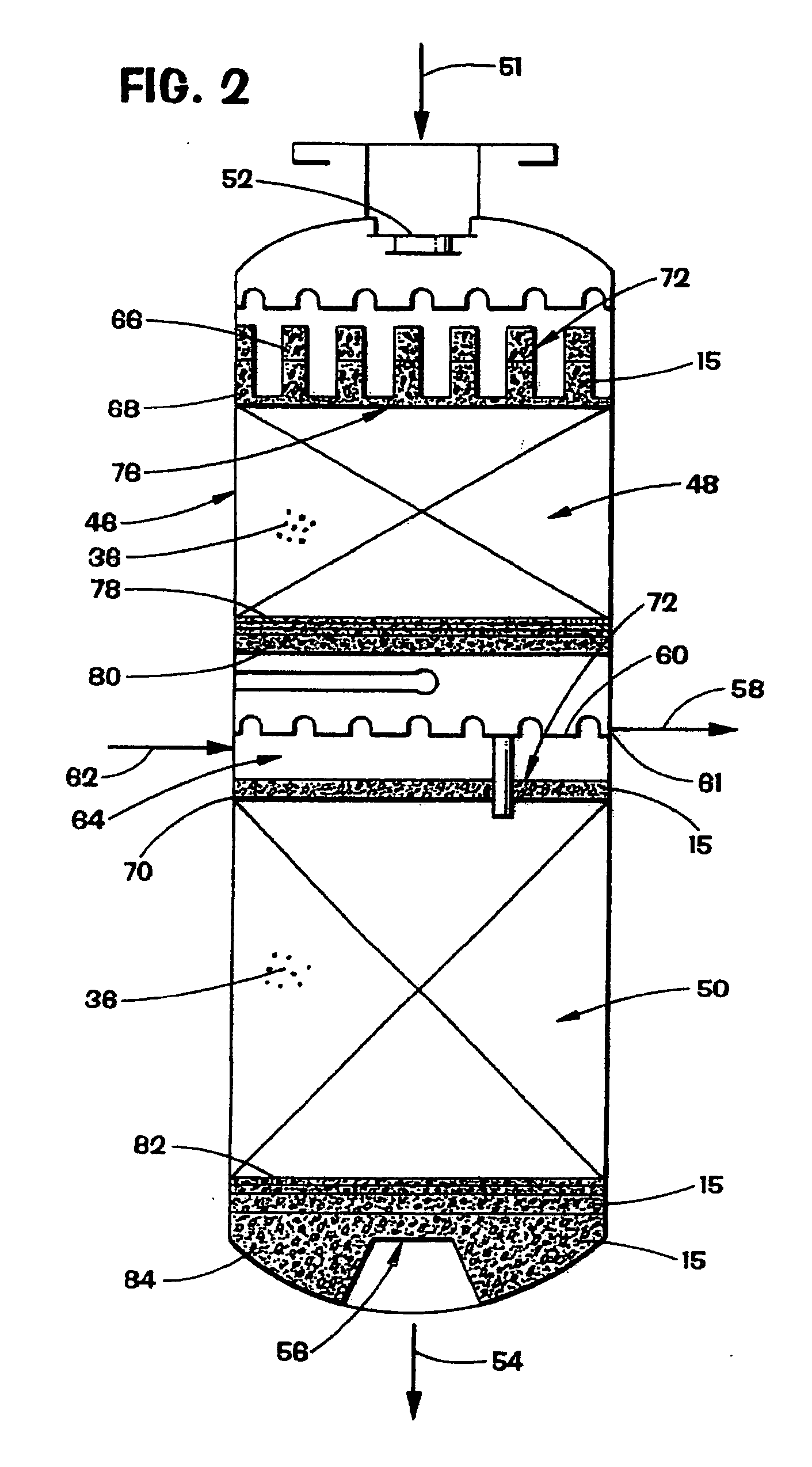Separation method and assembly for process streams in component separation units
- Summary
- Abstract
- Description
- Claims
- Application Information
AI Technical Summary
Benefits of technology
Problems solved by technology
Method used
Image
Examples
example 1
Use in a Distillate Hydrotreater
[0084] Data were obtained from a refinery for four distillate hydrotreaters in virtually identical process conditions. Two of the hydrotreaters, A and B, contained conventional reticulated materials, known as “ring grading systems.” The remaining two hydrotreaters, C and D, used the reticulated elements of the present invention. FIG. 17 shows a comparison of the pressure drop of the four hydrotreaters using conventional ring grading systems and the reticulated elements of the present invention. As can be seen in the graph, the pressure drop remained low relative to start-of-run pressure drop over a period in excess of 450 days in the C and D hydrotreaters containing the reticulated elements, while the A and B hydrotreaters using the conventional ring grading system showed a dramatic pressure increase after only 200 days in service. The results of the pressure drop comparison can be seen in Table 1. The contaminated process streams in the distillate h...
example 2
Use in a Naphtha Hydrotreater
[0086] Data was obtained from a refinery with four naphtha hydrotreaters. Three of the hydrotreaters (A, B, and C) used conventional ring grading systems, while the remaining hydrotreater (D) used the reticulated elements of the present invention. FIG. 18 illustrates that comparative pressure drop between the four hydrotreaters. At the end of 200 days, the unit with the reticulated elements D experienced minimal pressure drop, i.e. −4 psi for hydrotreater D, compared to the pressure drop experienced by the three units containing ring grading systems, i.e. 10 psi for hydrotreater B and 22 psi for hydrotreater C. The contaminated process streams in the naphtha hydrotreaters were predominantly in a vapor phase. The reticulated elements of the present invention filtered efficiently and effectively while the conventional ring grading systems became clogged.
[0087] Referring again to FIG. 1, unless otherwise noted, in addition to filtering the contaminated pr...
PUM
| Property | Measurement | Unit |
|---|---|---|
| Surface area | aaaaa | aaaaa |
| Composition | aaaaa | aaaaa |
| Size | aaaaa | aaaaa |
Abstract
Description
Claims
Application Information
 Login to View More
Login to View More - R&D
- Intellectual Property
- Life Sciences
- Materials
- Tech Scout
- Unparalleled Data Quality
- Higher Quality Content
- 60% Fewer Hallucinations
Browse by: Latest US Patents, China's latest patents, Technical Efficacy Thesaurus, Application Domain, Technology Topic, Popular Technical Reports.
© 2025 PatSnap. All rights reserved.Legal|Privacy policy|Modern Slavery Act Transparency Statement|Sitemap|About US| Contact US: help@patsnap.com



